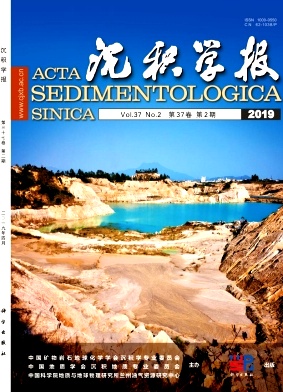Generation of Petroleum and Natural Gas in the Transformation of Organic Matter by Microbia at Different Evolution Stages
doi: 10.14027/j.issn.1000-0550.2018.103
- Received Date: 2018-09-13
- Rev Recd Date: 2018-12-14
- Publish Date: 2019-04-10
-
Key words:
- biodegradation /
- organic matter evolution /
- oil and gas generation
Abstract: Petroleum is produced through biogeological action. Oil generation follows regularity in the deposition of marine or terrestrial facies. The composition and structure of the organic matter exert an influence on the formation of petroleum and natural gas in sediments. For example, materials that easily dissolve in water and have low molecular weight, join with simple compounds in the petroleum formation first. Source materials of lower-maturation oils mainly include algae, low aquatic organisms, low plants, and twigs, leaves, fruits, etc. from terrestrial plants. Their compositions mainly consist of carbohydrates, starch, hemicelluloses, chlorophyll, etc., as well as the short chain and easily dissolved fatty acids and proteins. Microbia mainly include amylolytic bacteria, carbohydrate-splitting bacteria hydrogen-producing bacteria, and others.
The organic matter of mature oils mainly originates from the lopoid and protein in organisms and algae, or from the carbohydrates in terrestrial organic matter, in which fat-decomposing bacteria, protelytic bacteria, H2-producing bacteria, etc. grow. In the early stages, fatty acids cannot be dissolved in water. Only when no other superior carbon materials existed in the environment could the microbia grow by using and decomposing lipoids. Fatty acid takes the linear bonding of carbon and hydrogen as the dominant structure within the carboxyl group. Oxygen-containing groups are eliminated, and petroleum can be generated in great quantity. Amino acids are also mainly straight chain structures, and eliminated end carboxyl groups might form hydrocarbons. Fatty acids and protein are transformed to petroleum at the same time, and therefore, the high peak of the generated oil is formed. Source rocks containing abundant organisms are excellent hydrocarbon-generating materials.
Thermophile and superthermophilic methanogens subsist at high evolutional stages with great quantity. Their methane-generating model is H2+CO2. Cellulose, xylem, high polymers, and others from terrestrial plants were degraded at the mature stage with difficulty, and yet they might be decomposed and provide carbon for forming CO2 at a high evolutional stage.
Microbia degrade organic matter to form petroleum and natural gas. Not only is there a successively settled basin, but also abundant organic matter from source rocks, and oil-generation might take place, which will require the degradation of original materials, elimination of oxygen-containing group, H2-producing bacteria to generate hydrogen H2-expending bacteria to use hydrogen, and other processes, which is more complicated than natural gas formation. Natural gas might be formed at a depth of 10 m in Quaternary reserves, but oil reserves need to be buried below 1 000 m depth within Tertiary strata for formation to occur.
| Citation: | HUI RongYao, DING AnNa. Generation of Petroleum and Natural Gas in the Transformation of Organic Matter by Microbia at Different Evolution Stages[J]. Acta Sedimentologica Sinica, 2019, 37(2): 424-431. doi: 10.14027/j.issn.1000-0550.2018.103 |






 DownLoad:
DownLoad: